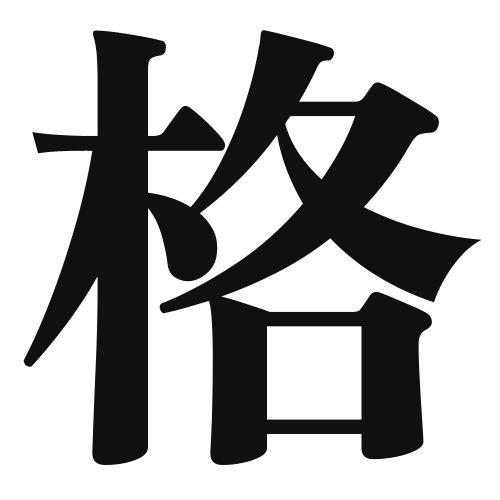1. Overview of Meaning
The kanji “格” (kaku) generally means “standard,” “pattern,” or “framework.” It is often used to denote a level of quality or a set of rules that something adheres to.
2. Formation and Radical
The kanji “格” is a compound character (会意文字) that combines elements to convey its meaning. It consists of the radical “木” (tree) and the character “各” (each), symbolizing the idea of different standards or frameworks.
The radical “木” often relates to things that are structured or organized, while “各” suggests individuality or separation, together forming the concept of various standards.
3. Examples of Usage
Common words and phrases that include “格” are:
- 格好 (kakkou) – appearance, shape
- 格言 (kakugen) – proverb
- 資格 (shikaku) – qualification
Example sentence in daily conversation:
「彼はその仕事に必要な資格を持っています。」
(He has the qualifications needed for that job.)
4. Synonyms and Antonyms
Similar kanji with related meanings include:
- 基準 (kijun) – standard, criterion (more about a specific benchmark)
- 様式 (youshiki) – style, form (more about the manner of doing something)
Antonyms include:
- 無秩序 (muchi chizu) – disorder, chaos (indicating a lack of structure)
5. Cultural and Historical Background
The kanji “格” is deeply rooted in Japanese culture, often associated with concepts of order and standards in various aspects of life, including education and social behavior.
Proverbs and idiomatic expressions that include “格” are:
- 格言 (kakugen) – a saying that conveys wisdom or a moral lesson.
These expressions reflect the importance of maintaining standards and values in Japanese society.
